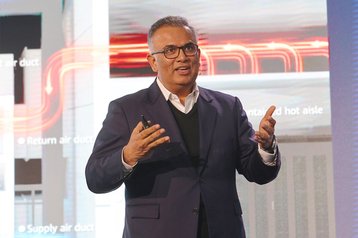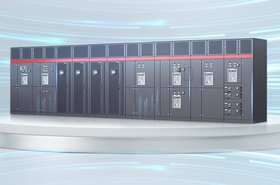As data centers face the challenges of AI workloads, which require more power for both GPU arrays and the extra cooling they require, operators are having to reevaluate the way their power supply is distributed to ensure it meets demands of reliability, density, evolution, and time to market (TTM.)
To meet these challenges, Huawei has announced SmartDC, a suite of solutions offering the benefits of an integrated power system, distributed cooling system, and prefab modular deployment. This solution is designed to “mitigate uncertainty” in the coming AI maelstrom, says the company.
The range, which was launched at MWC Barcelona 2024, is the latest step in Huawei’s mission to create industry-leading data center products and solutions to help customers and partners build green and reliable infrastructure in the intelligent computing era, as part of its efforts to power the digital era forward.
Sanjay Kumar Sainani, SVP & CTO of global data center facility told us: “SmartDC is a combined solution that includes a converged power system, distributed cooling system, and prefabricated modular deployment. In terms of power supply systems, Huawei’s PowerPOD 3.0 adopts an integrated design. One power system is provided in one row.
“When the system operates in S-ECO mode, it increases the end-to-end efficiency from 95.4 percent to 98.4 percent, reducing the loss by 70 percent. As for the cooling system, Huawei's indirect evaporative cooling EHU maximizes free cooling sources, supports one heat exchange, and automatically adjusts cooling capacity based on the load, saving water and electricity by 60 percent.”
The power system offers a simplified architecture, designed to future-proof it for the AI era, yet it packs its components densely, meaning it can offer high efficiency, faster delivery, and higher reliability in a smaller footprint where a conventional 18 cabinet setup can be replaced by just 10 cabinets. With the iPower feature, the lifespan of fans, capacitors, and other key components can be predicted by built-in AI, up to a year in advance, giving users more control over their maintenance scheduling, and cutting SLA failure rates by up to 38 percent.
The distributed cooling system couples its distributed architecture with a small fault domain, meaning individual faults can be isolated, without shutting down the entire system, increasing uptime. Only one heat exchange is required, saving both water and electricity. By maximizing the use of free cooling sources, it can achieve a PUE as low as 1.15 (IRE), with a WUE as low as 0.6.
Huawei's PowerPOD-O 3.0, a prefabricated outdoor solution, offers a converged power system with a plug-and-play power supply, reducing delivery time by 40 percent in large data center environments. The solution incorporates an uninterruptible power supply (UPS) powered with highly safe lithium batteries, encased in ultra-durable materials, and pre-sealed in the factory for fast deployment.
Sanjay adds, “Thanks to its fully decoupled architecture, Huawei's PowerPOD-O 3.0 provides integrated and prefabricated cooling and power equipment, enabling on-demand outdoor deployment and flexible capacity expansion. With prefabrication and pre-commissioning in the factory, the system is available immediately upon connection, shortening the delivery period by 40 percent and achieving optimal TTM.”
The SmartDC solution goes further in its scope thanks to the use of cutting-edge solutions. Sanjay explains: “We make use of intelligent O&M and AI-based energy efficiency optimization to maximize O&M efficiency and energy efficiency. Based on Huawei's iCooling energy efficiency optimization technology, the actual PUE during operation is consistent with the designed PUE. In indirect evaporative cooling scenarios, the PUE is reduced by three to five percent.”
SmartDC continues Huawei’s commitment to what it calls “GSSR” (Green, Simple, Smart, Reliable) products. Sanjay walks us through the principles involved: “To cope with the challenges of traditional data centers such as long construction periods, high energy consumption, difficult O&M, and low reliability, Huawei proposes the concept of GSSR to build future-proof data centers and enables the sustainable development of the data center industry to power the digital era forward.”
GSSR is broken down like this:
- Green: Huawei data center solutions feature high energy efficiency, high density, and a small footprint. They provide end-to-end (E2E) carbon emission reduction to maximize energy utilization and minimize environmental impact.
- Simple: Huawei data center solutions adopt simple design from deployment to operation and maintenance (O&M) throughout the entire lifecycle.
- Smart: Huawei data center solutions enable intelligent O&M and AI-based energy efficiency optimization to maximize O&M efficiency and energy efficiency.
- Reliable: Reliable architecture and preventive maintenance safeguard data centers.
Together, these devices, along with innovative data center solutions, offer customers and partners the opportunity to deploy a convergent data center infrastructure, designed for the era of intelligent computing, This setup not only increases reliability but also minimizes energy consumption, reducing the facility's carbon footprint.
Learn more from Huawei here





